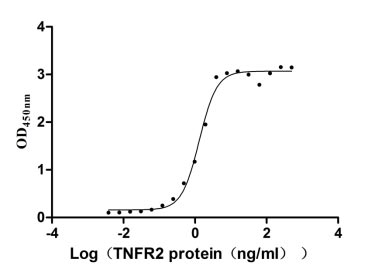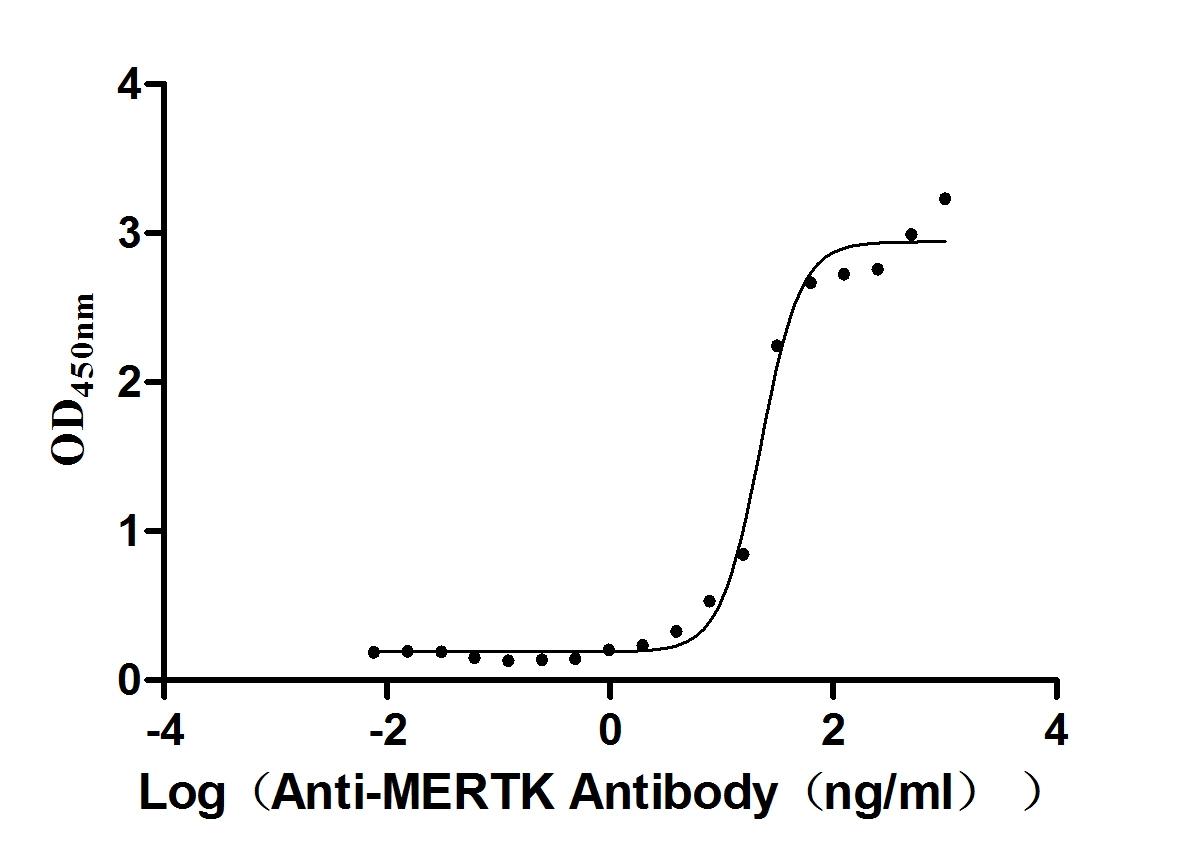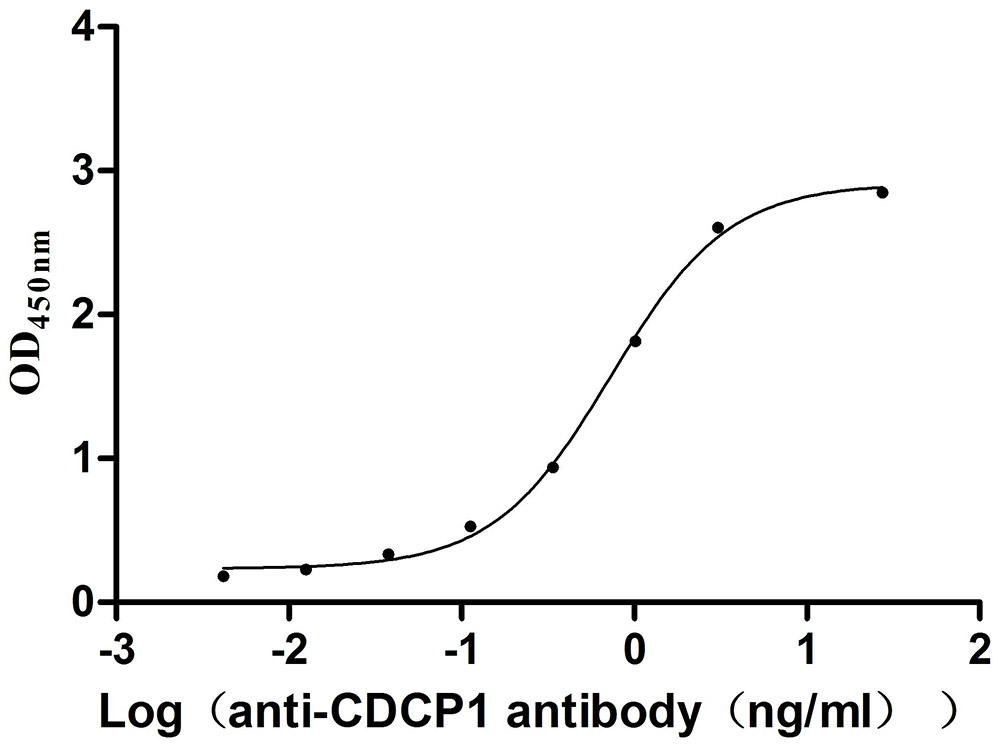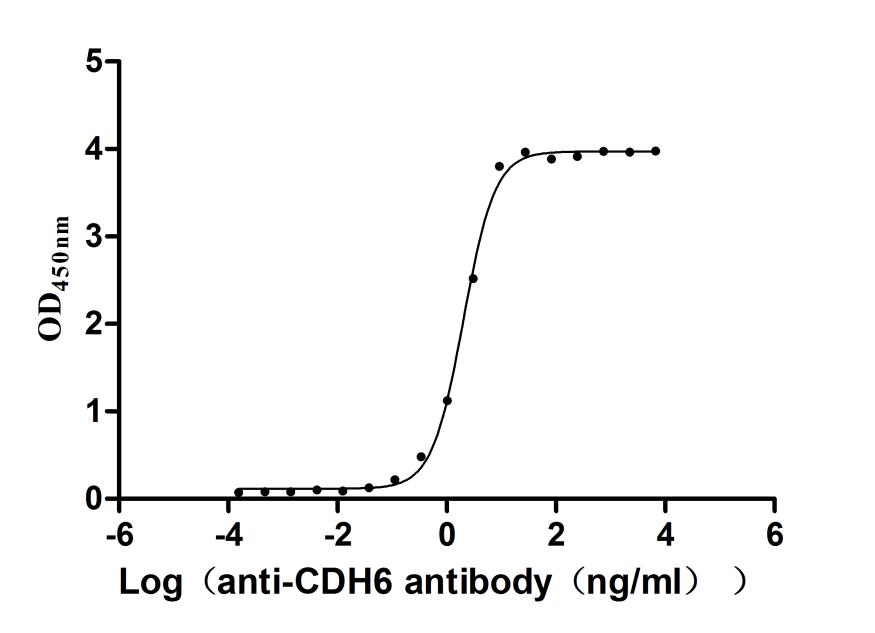Recombinant Mouse Acid-sensing ion channel 2 (Asic2), partial
-
中文名称:Recombinant Mouse Acid-sensing ion channel 2(Asic2),partial,Yeast
-
货号:CSB-YP856409MO
-
规格:
-
来源:Yeast
-
其他:
-
中文名称:Recombinant Mouse Acid-sensing ion channel 2(Asic2),partial,Yeast
-
货号:CSB-EP856409MO
-
规格:
-
来源:E.coli
-
其他:
-
中文名称:Recombinant Mouse Acid-sensing ion channel 2(Asic2),partial,Yeast
-
货号:CSB-EP856409MO-B
-
规格:
-
来源:E.coli
-
共轭:Avi-tag Biotinylated
E. coli biotin ligase (BirA) is highly specific in covalently attaching biotin to the 15 amino acid AviTag peptide. This recombinant protein was biotinylated in vivo by AviTag-BirA technology, which method is BriA catalyzes amide linkage between the biotin and the specific lysine of the AviTag.
-
其他:
-
中文名称:Recombinant Mouse Acid-sensing ion channel 2(Asic2),partial,Yeast
-
货号:CSB-BP856409MO
-
规格:
-
来源:Baculovirus
-
其他:
-
中文名称:Recombinant Mouse Acid-sensing ion channel 2(Asic2),partial,Yeast
-
货号:CSB-MP856409MO
-
规格:
-
来源:Mammalian cell
-
其他:
产品详情
-
纯度:>85% (SDS-PAGE)
-
基因名:Asic2
-
Uniprot No.:
-
别名:Asic2; Accn1; Bnac1Acid-sensing ion channel 2; ASIC2; Amiloride-sensitive brain sodium channel; Amiloride-sensitive cation channel 1; neuronal; Brain sodium channel 1; BNC1; BNaC1
-
种属:Mus musculus (Mouse)
-
蛋白长度:Partial
-
蛋白标签:Tag type will be determined during the manufacturing process.
The tag type will be determined during production process. If you have specified tag type, please tell us and we will develop the specified tag preferentially. -
产品提供形式:Lyophilized powder
Note: We will preferentially ship the format that we have in stock, however, if you have any special requirement for the format, please remark your requirement when placing the order, we will prepare according to your demand. -
复溶:We recommend that this vial be briefly centrifuged prior to opening to bring the contents to the bottom. Please reconstitute protein in deionized sterile water to a concentration of 0.1-1.0 mg/mL.We recommend to add 5-50% of glycerol (final concentration) and aliquot for long-term storage at -20℃/-80℃. Our default final concentration of glycerol is 50%. Customers could use it as reference.
-
储存条件:Store at -20°C/-80°C upon receipt, aliquoting is necessary for mutiple use. Avoid repeated freeze-thaw cycles.
-
保质期:The shelf life is related to many factors, storage state, buffer ingredients, storage temperature and the stability of the protein itself.
Generally, the shelf life of liquid form is 6 months at -20°C/-80°C. The shelf life of lyophilized form is 12 months at -20°C/-80°C. -
货期:Delivery time may differ from different purchasing way or location, please kindly consult your local distributors for specific delivery time.Note: All of our proteins are default shipped with normal blue ice packs, if you request to ship with dry ice, please communicate with us in advance and extra fees will be charged.
-
注意事项:Repeated freezing and thawing is not recommended. Store working aliquots at 4°C for up to one week.
-
Datasheet :Please contact us to get it.
靶点详情
-
功能:Cation channel with high affinity for sodium, which is gated by extracellular protons and inhibited by the diuretic amiloride. Also permeable for Li(+) and K(+). Generates a biphasic current with a fast inactivating and a slow sustained phase. Heteromeric channel assembly seems to modulate.
-
基因功能参考文献:
- ASICs promote the inflammatory response and apoptosis of RAW 264.7 cells. PMID: 30074209
- the potentiation of ASICs by quinine depends on the presence of the ASIC1a, ASIC2a subunits, but not ASIC1b, ASIC3 subunits. Furthermore, we have determined the amino acids in ASIC1a that are involved in the modulation of ASICs by pHi. PMID: 27402850
- ASIC2 deletion significantly protected the mouse brain from ischemic damage in vivo. PMID: 26861816
- Studies with ASIC1a-ASIC2a chimeras showed that swapping the thumb domain between subunits results in faster channel desensitization. Likewise, the covalent modification of Cys residues at selected positions in the beta-ball-thumb interface accelerates the desensitization of the mutant channels. PMID: 27015804
- differential surface trafficking of ASIC1a, ASIC2a, and ASIC2b, was investigated. PMID: 26746198
- These data identify the LL motifs as a negative regulator of ASIC2a trafficking and function, and suggest novel regulatory mechanisms in acid signaling. PMID: 26819004
- ASIC2 contributes to transduction of the renal myogenic response and has a protective role against renal injury and hypertension. PMID: 25520010
- These results lend support to an emerging role of ASIC2 in the targeting of ASICs to surface membranes, and allows for interaction with PSD-95 to regulate these processes. PMID: 24699665
- A previously unknown postsynaptic current during neurotransmission mediated by ASIC1A and ASIC2 is well positioned to regulate synapse structure and function. PMID: 24952644
- ASIC2 knockout mice showed less sensitization to challenge cocaine when compared to wild-type. PMID: 23644053
- Currents from ASIC1a(-/-) muscle afferents were less pH-sensitive and displayed faster recovery, currents from ASIC2(-/-) showed diminished potentiation by zinc, and currents from ASIC3(-/-) displayed slower desensitization than those from wild-type. PMID: 23109675
- Anions modulate a variety of acid-sensing ion channel properties and are dependent on subunit composition. The mechanism of modulation for ASIC2a and -3 is distinct from that of ASIC1a. PMID: 23135698
- loss of ACCN1 function does not modify dental fluorosis severity in mice PMID: 22243220
- Therefore, PICK1 interacts with BNaC/ASIC channels and may regulate their subcellular distribution or function in both peripheral and central neurons PMID: 11739374
- These data indicate that combinations of two or more DEG/ENaC subunits coassemble as heteromultimers to generate transient H(+)-gated currents in mouse DRG neurons. PMID: 11854527
- Photoreceptors and neurons of the mouse retina express the H+-gated cation channel subunits acid-sensing ion channel 2a(ASIC2a) and ASIC2b; ASIC2 knock-out mice are more sensitive to light-induced retinal degeneration. PMID: 14762118
- findings indicate that the absolute and relative amounts of ASIC subunits (ASIC1 & ASIC2) determine the amplitude and properties of hippocampal H(+)-gated currents and therefore may contribute to normal physiology and pathophysiology. PMID: 14960591
- ASIC2b has a role in regulation of ASIC3 via the partner protein PICK-1 PMID: 14976185
- results indicate that ASIC2 is not required for acid taste in mice, and that if a universal mammalian acid taste transduction mechanism exists, it likely uses other acid-sensitive receptors or ion channels PMID: 15102924
- our data do not support a role of ASIC2 in cutaneous mechanosensation and visceral mechanonociception. PMID: 15169849
- we report for the first time that serum- and glucocorticoid-inducible kinase-1 regulates transcription of ENaC subunits PMID: 15536167
- ASIC2 is not directly involved in the mechanotransduction of the mammalian cochlea. ASIC2 contributes to suprathreshold functions of the cochlea. PMID: 15537887
- In-situ hybridization studies showed that ASIC1b transcripts were expressed in the inner and outer hair cells.Immunohistochemical analyses revealed that the ASIC1b channels were located at the insertions of the stereocilia into the hair cells. PMID: 16951561
- ASIC1, 2, and 3 are expressed preferentially in colonic neurons within thoracolumbar DRG. QPCR of whole thoracolumbar DRG revealed and abundance of ASIC2 > ASIC1 > ASIC3. PMID: 17177258
- Acid sensing ion channels 2 are required for inhibition of visceral nociceptors by benzamil. PMID: 17467171
- AKAP150 and the protein phosphatase calcineurin are binding proteins to ASIC2a, and calcineurin regulates ASIC1a and ASIC2a activity PMID: 17548344
- Normal ASIC2 expression is required for normal pressure-induced constriction in the middle cerebral artery. PMID: 18296560
- SGK1 and SGK1.1, driven by distinct promoters, any changes in SGK1 transcript level must be examined to define the isoform induced by each stimulus or neurological disorder PMID: 18334630
- Following formalin injection, ASIC1(-/-) and ASIC2(-/-) mice showed enhanced pain behaviour PMID: 18801682
- These data demonstrate that chronic cocaine exposure can upregulate ASIC expression in the striatum in a subunit-selective (ASIC1 and ASIC2) manner. PMID: 19427358
- The results of this study indicate that ASIC2 facilitates ASIC1a localization and function in dendritic spines and suggest that the two subunits work in concert to regulate neuronal function. PMID: 19571134
- ASIC2a and -3 are the major ASIC subunits in cardiac dorsal root ganglia neurons and provide potential molecular targets to attenuate chest pain and deleterious reflexes associated with cardiac disease. PMID: 19590043
显示更多
收起更多
-
亚细胞定位:Cell membrane; Multi-pass membrane protein. Note=Localized at the plasma membrane, in the soma and punctated peripheral processes of neurons.
-
蛋白家族:Amiloride-sensitive sodium channel (TC 1.A.6) family, ASIC2 subfamily
-
组织特异性:Expressed by sensory neurons. Expressed by nociceptive sensory neurons, spiral ganglion (SG) neurons and the retina (at protein level). Isoform 1 and isoform 2 are expressed in outer nuclear layer of retina (photoreceptors) and to a lower extent in distal
-
数据库链接:
KEGG: mmu:11418
UniGene: Mm.234998
Most popular with customers
-
Recombinant Human Tumor necrosis factor receptor superfamily member 1B (TNFRSF1B), partial (Active)
Express system: Mammalian cell
Species: Homo sapiens (Human)
-
Recombinant Mouse Tyrosine-protein kinase Mer (Mertk), partial (Active)
Express system: Mammalian cell
Species: Mus musculus (Mouse)
-
Recombinant Human Desmoglein-2 (DSG2), partial (Active)
Express system: Mammalian cell
Species: Homo sapiens (Human)
-
Recombinant Mouse CUB domain-containing protein 1 (Cdcp1), partial (Active)
Express system: Mammalian cell
Species: Mus musculus (Mouse)
-
Recombinant Human Serotransferrin(TF) (Active)
Express system: Mammalian cell
Species: Homo sapiens (Human)
-
Recombinant Human Interleukin-12 receptor subunit beta-1(IL12RB1),partial (Active)
Express system: Mammalian cell
Species: Homo sapiens (Human)
-
Recombinant Human Interleukin-1 receptor accessory protein (IL1RAP), partial (Active)
Express system: Mammalian cell
Species: Homo sapiens (Human)
-
Recombinant Mouse Cadherin-6(Cdh6),partial (Active)
Express system: Mammalian cell
Species: Mus musculus (Mouse)




















